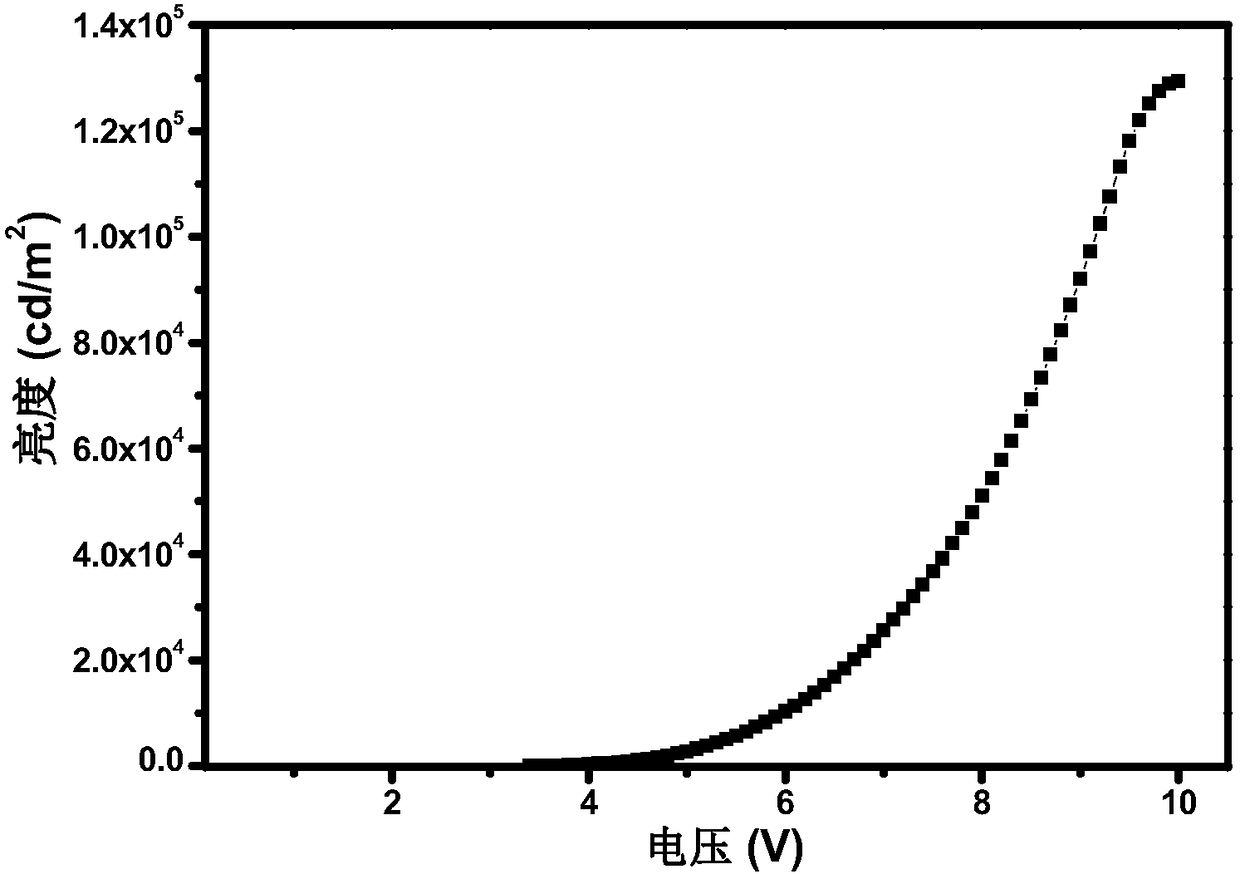Novel iridium complex with thiocarboxylic acid compound as auxiliary ligand
A technology of iridium complexes and ligands, which is applied in the field of iridium complex light-emitting materials, can solve problems such as carrier imbalance and lower device efficiency, achieve simple preparation methods, improve electron mobility, and increase synthesis and sublimation yields Effect
- Summary
- Abstract
- Description
- Claims
- Application Information
AI Technical Summary
Problems solved by technology
Method used
Image
Examples
Embodiment 1
[0034] Embodiment 1 Preparation of auxiliary ligand dithiodiphenylcarbamate lithium salt solution
[0035] Reflux lithium hydride, carbon disulfide and diphenylamine in toluene under anaerobic conditions for two hours, add water for extraction after cooling, and obtain a lithium salt solution of dithiodianiline formic acid The yield reached 100%.
[0036] Adopt above-mentioned method to make other lithium thioformate aqueous solution:
Embodiment 2
[0037] The preparation of embodiment 2 iridium complexes of the present invention
[0038] The main ligand 1-(4-(trifluoromethyl)phenyl)isoquinoline and IrCl 3 Reflux 10 hours in the ethoxyethanol solution with the ratio of 2:1, the chlorine bridge complex of iridium obtained by cold filtration; The saline solution was refluxed in ethoxyethanol for two hours to obtain the crude product of the iridium complex, and column chromatography gave 17.85 g of pure product Samc 4 (yield: 92%). And further place 5 grams of Samc 4 in the quartz tube, at 10 -5 Heating and sublimation purification under Pa vacuum conditions obtained 4.6 g of luminescent materials (sublimation rate 92%) that met the requirements for preparing devices. The response looks like this:
[0039]
[0040] Gained iridium complex Samc 4 is analyzed as follows by proton nuclear magnetic resonance spectrum and high-resolution mass spectrometry:
[0041] 1 H NMR (400MHz, CDCl 3 )δ8.58(d, J=8.2Hz, 2H), 8.00(t, J...
Embodiment 3
[0047] Preparation of Example 3 Iridium Complex Samc 4 Organic Electroluminescent Device
[0048] The preparation of the organic electroluminescent device of the present invention will be described below by taking Samc 4 as the luminescent center of the luminescent layer to prepare an organic electroluminescent device as an example. The structure of OLEDs device includes: substrate, anode, hole injection material, hole transport layer, organic light-emitting layer, electron transport layer, electron injection material and cathode. The substrate is glass, the anode is indium tin oxide, and the hole injection layer is 2,3,6,7,10,11-hexacyano-1,4,5,8,9,12-hexaazabenzene Phenanthrene HAT-CN (5nm), the evaporation rate is 0.05nm / s; the hole layer is made of 4,4'-cyclohexylbis[N,N-bis(4-methylphenyl)aniline TAPC material (50nm) , the evaporation rate is 0.05nm / s; the electron transport layer adopts 1,3,5-tris[(3-pyridyl)-3-phenyl]benzene TmPyPb (50nm), the evaporation rate is 0.05n...
PUM
| Property | Measurement | Unit |
|---|---|---|
| thickness | aaaaa | aaaaa |
| luminance | aaaaa | aaaaa |
| current efficiency | aaaaa | aaaaa |
Abstract
Description
Claims
Application Information
 Login to View More
Login to View More - R&D
- Intellectual Property
- Life Sciences
- Materials
- Tech Scout
- Unparalleled Data Quality
- Higher Quality Content
- 60% Fewer Hallucinations
Browse by: Latest US Patents, China's latest patents, Technical Efficacy Thesaurus, Application Domain, Technology Topic, Popular Technical Reports.
© 2025 PatSnap. All rights reserved.Legal|Privacy policy|Modern Slavery Act Transparency Statement|Sitemap|About US| Contact US: help@patsnap.com



